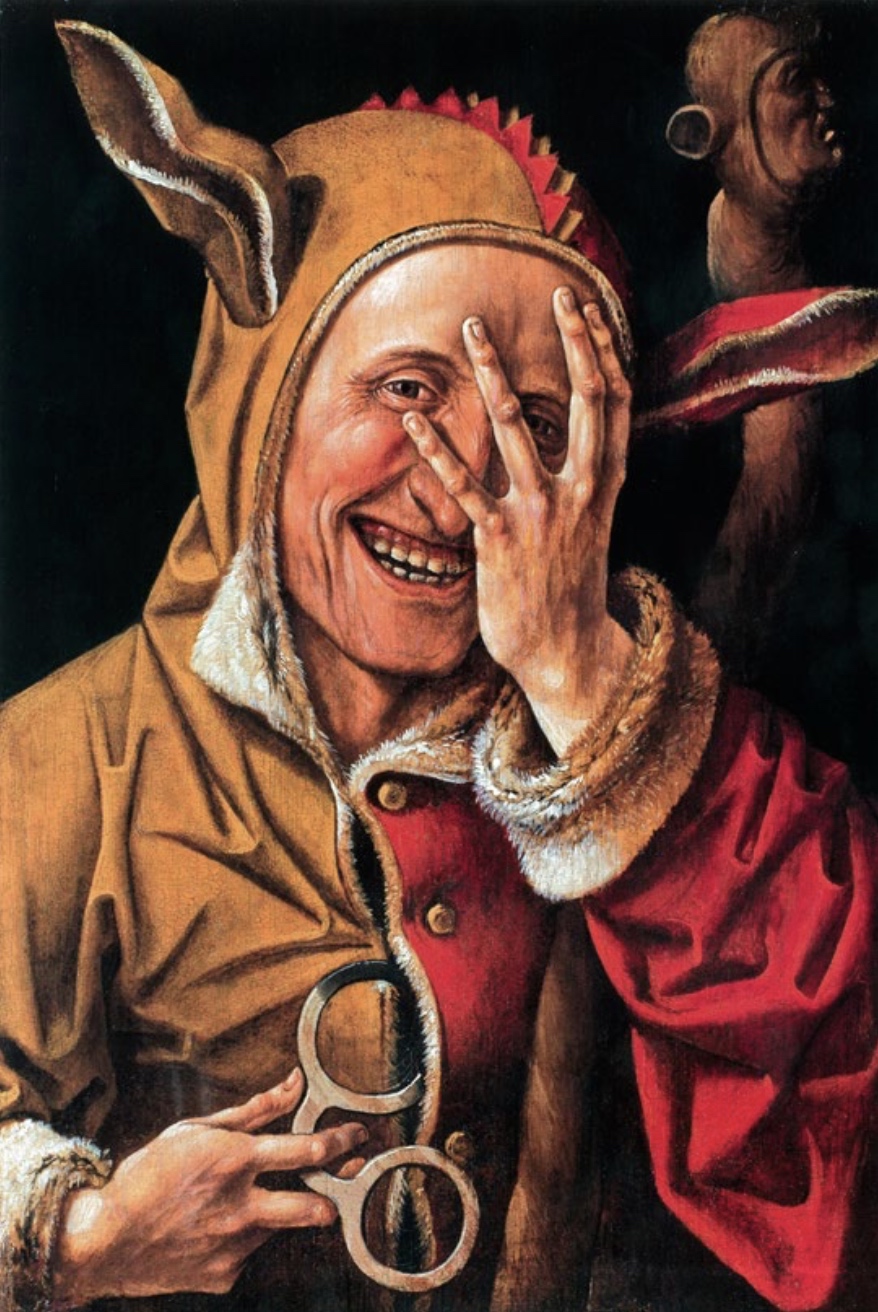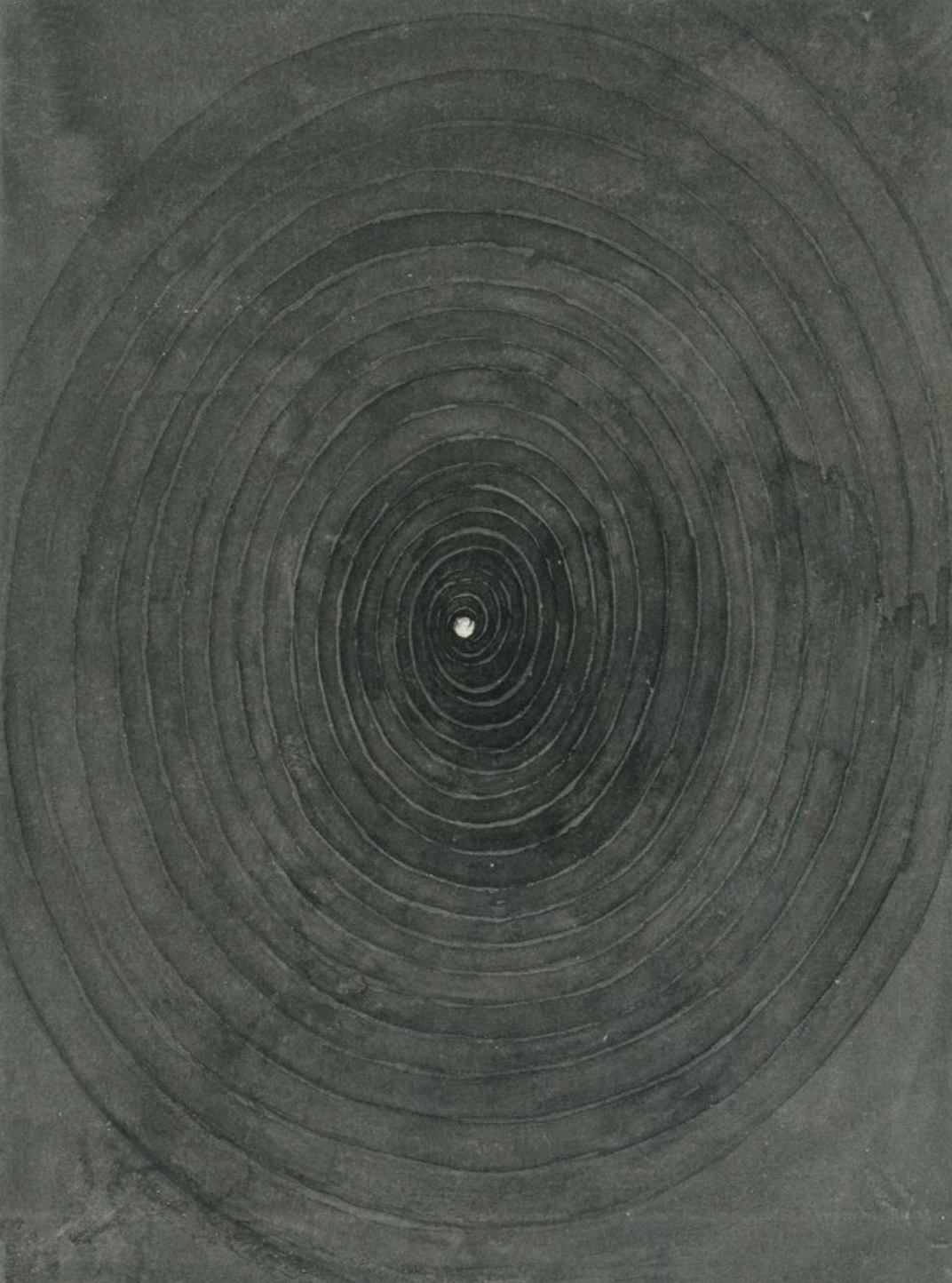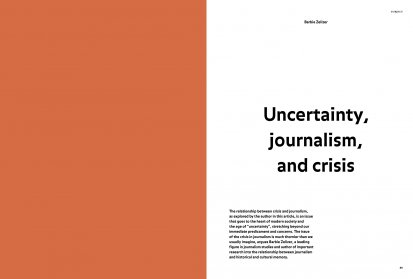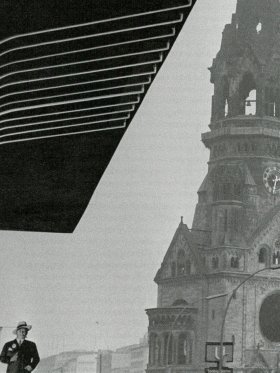Over two centuries ago, the American poet Ralph Waldo Emerson noted that bad times have a scientific value because they are occasions a good learner would not miss. The role of challenges in today’s complicated institutional landscape echoes Emerson’s sentiments, for they prompt us to pause, reorient, continue doing what we always did, or change direction. Acting as ruptures of continuity, challenges provide opportunities to regroup and recast the givens that orient action. What happens, however, when a sense of challenge looms so large that it takes over, hardening the perception of challenge into crisis? Such is the case with journalism today. We hear much about the crisis facing contemporary news, which by many accounts is losing its very foundations. Journalism, it is often said, is on its way out, with the present crisis pushing it forcefully out the door. The discursive shape of this claim deserves consideration. What is gained and lost by explaining the conditions facing journalism as a situation of “crisis”? Though the intent here is neither to make small of the details on the ground nor minimize the precariousness experienced by journalism, it is useful to consider the invocation of “crisis” as a term of choice and tease out its attributes as an example of institutional response to uncertainty. While scholars have suggested examining this discourse’s contours, doing so forcefully may help us better appraise what is being eclipsed by lamentations of a futureless horizon for journalism. This article argues that much of today’s response to the crisis of journalism travels a well-trodden path. Following discursive cues set in place long ago to a now outdated and spatially narrow notion and understanding of institutional disarray, the notion of crisis that has prevailed among many observers rests on particular temporalities and geographies at the core of its imaginary. Invoking “crisis” as a way to explain journalism’s predicament thus misses an opportunity to recognize how contingent and differentiated the futures of journalism might be.
The relationship between crisis and journalism, as explored by the author in this article, is an issue that goes to the heart of modern society and the age of “uncertainty”, stretching beyond our immediate predicament and concerns. The issue of the crisis in journalism is much thornier than we usually imagine, argues Barbie Zelizer, a leading figure in journalism studies and author of important research into the relationship between journalism and historical and cultural memory.

Master of 1537 (anonymous artist of the Flemish School), Laughing Fool (Version B), 1547
on uncertainty, modernity and crisis
One widely shared observation about the contemporary age is that it is riddled with uncertainty. Theorizing about current conditions has promoted notions of risk (Ulrich Beck), contingency (Rorty), indeterminacy (Eisenstadt) and liquidity (Bauman). The instability at issue here can obscure the subtle differences in the terms used to describe it. But all provide a description of unsettled conditions, against which some response is presumed to be of value.
Uncertainty’s ubiquitous presence today raises fundamental questions about future sustainability, with the environment, the market and global security but some of its central challenges. As Wallerstein (2004, p. 39) noted, “Scientists are now able to consider seriously for the first time the commonsense proposition that they had so rigorously rejected: that the social world is intrinsically uncertain.” Though uncertainty has been celebrated, it rests upon a degree of random variability, standing out “from those ways of thinking and governing that assume a determinate world” (O’Malley, 2004, p. 14). In such a light, institutions find themselves facing obstacles for which they are ill prepared. The routine functioning on which institutions rest goes by the wayside when uncertainty surfaces, and journalism here is no exception.
"What is gained and lost by explaining the conditions facing journalism as a situation of “crisis”? This article argues that, in general, today’s response to the crisis of journalism travels a well-trodden path."
The invocation of “crisis” offers a useful discursive response to the angst generated by uncertainty. With modernity “staged as that which is singular, original, present, and authoritative” (Mitchell, 2002, p. 24), the choice of “crisis” as a term to describe contemporary challenges fits the modern sensibility because it helps keep uncertainty at bay. Though today there are many ways to think about crisis, at the heart of most perspectives is the aspiration that one can reach its other side. In their recent discussion of Europe’s current economic woes, for instance, Bauman and Bordoni described a state of contemporary paralysis that has made the region a laboratory for survival everywhere: as Europe will resolve the impact of current austerity measures, so will other regions follow in its stead. In fact, the prospect of overcoming crisis is rooted in the intellectual project of the Enlightenment, when stability, order and reason arose as targets of protection and nurturance, and anything that disrupted that relationship needed to be contained. In Bauman’s words (Bauman & Bordoni, 2014, p. 7), when discussing “crisis of whatever nature…we convey first the feeling of uncertainty, of our ignorance of the direction to which the affairs are about to turn – and secondly the urge to intervene. Adjacent to larger tendencies toward what Hacking called the “probablization” of the Western imagination, controlling crisis was thus seen as a useful offset to an indeterminate future. And yet, as Koselleck argued over half a century ago, invoking the term “crisis” in response to uncertain conditions is problematic. Its invocation has naturalized many of its constituent details, and contingencies of a geographical and historical nature often fade out when we use it today.
Characterized by some combination of perceived suddenness, disruption, urgency, loss, and the need for external assistance in order to offset helplessness and reach recovery, crisis seems to possess an extended set of attributes. Yet, each of them is easily debatable when probed closely: is a crisis that follows long periods of neglect as sudden as we make it out to be? Why is disruption more deserving of attention than what precedes it? Do environments without the capacity to learn through mistakes or problems escape discussion about crisis? What precisely is so attractive about the promise of a non-crisis moment? These questions, and others, begin to hint at how partial and precarious the idea of crisis may in fact be.
In that much about institutional workings is connected to modernity, it is not surprising that modernity has a lasting impact on institutional life. Weber was among the first to point out that institutions use language to continually legitimate themselves, and that view has been supported in different ways over time. As such, the term “crisis” emerges as a descriptor of institutional disarray because it has utility for those invoking it: thus, discussions about journalism do not tend to reference journalism and risk, uncertainty, noise, danger, chaos or threat, even though all are part of the institutional environments in which journalism finds itself. Instead the talk of journalism’s current challenges has for many become the talk of crisis. Examples of its invocation abound. Much of the crisis discourse is driven by journalists themselves: a Google search for “the end of journalism” yields 9.2 billion hits. Media critics and academics often compound its centrality by adopting it whole, spawning titles such as Losing the News (Alex S. Jones), Can Journalism Be Saved? (Rachel Davis Mersey), and The End of Journalism (Alec Charles & Gavin Stewart). Though, in one view, “most authors stop short of predicting some sort of future equivalent of a journalistic nuclear winter” (Marcel Broersma & Chris Peters), they nonetheless focus pessimistically on incipient loss and its fallout. Philip Meyer and Robert McChesney and John Nichols independently predicated their predictions of widespread doom on the crisis of failing traditional business models, while Jack Fuller pointed to the changing audience relationship as a primary cause of contemporary malaise. David Mindich read the disenchantment among young people with the news as a fundamental threat to democratic process and journalism’s future relevance. Framing the reigning pessimism most succinctly, McChesney and Victor Pickard famously asked, “Will the last reporter please turn out the lights?” The negative fallout from such reasoning should be clear: not only have claims about journalism’s crisis refracted the scholarly engagement with journalism and coloured notions of journalism’s viability, but they have obscured a fuller understanding of the permutations that get eclipsed by understanding crisis as a unitary phenomenon. To be sure, the uniform repair to a simplified notion of crisis in journalism has been challenged. Recent scholarship wrestling with the vagaries of current conditions has been a useful corrective to the discursive appeal of a unitary crisis on the landscape. Peters and Broersma, for instance, posited that journalism’s structural foundations necessarily refract ensuing challenges and that journalism’s digital storytelling shifts its institutional workings. Van der Haak, Parks and Castells unpacked the impact of traditional business models, arguing that there is “a crisis of the media industry, but not necessarily a crisis of journalism”. Chris Anderson saw journalists’ understandings of their audiences as central to achieving greater stability.
And yet, a simplified mode of describing journalism’s current challenges persists in many quarters. Why is this so? Its adoption may be because “crisis,” as a lexical term of choice, works in a productive fashion. It offers a particular way of editing from the picture aspects of reality that are not deemed central to the claim being made and focusing on what has the most strategic use-value. Though crisis is a phenomenon with material dimensions – factories close, people die, infrastructures collapse – it is shaped too by discourse. Using the label of “crisis” thus helps turn murky and troublesome challenges into a controllable phenomenon that can be identified, articulated, managed and, ultimately, got rid of.

Master of 1537 (anonymous artist of the Flemish School), Laughing Fool (Version A), 1547
responding to crisis
Specific conventions tend to surface repeatedly when the term “crisis” is used to describe uncertainty. They involve three aspects of crisis – its time, space and mode of invocation. All three are employed strategically to better engage with instability in a controlled fashion.
First, crisis invites a new temporal order. It divides time into before and after moments, past and future, with the crisis itself marking varying degrees of distinctiveness between them. In this sense, crisis is positioned as a temporally defined moment of transition. Framing uncertain circumstances as crisis helps rationalize an altered definition of journalists as dependent primarily on on-site presence and cell phones, for instance, or encourages an orientation to news that can be easily funded by external sources.
Second, crisis tends to be seen in clear and tangible spatial terms. It is given an agreed-upon beginning and this gives way to a degree of grounded causality. For example, the lack of public regard for news might be seen as an extension of Murdoch’s Australian tabloid empire, while the threat of physical harm to journalists might be associated with public strife in Russia or the Middle East. Central here is some attempt to encapsulate a place where the problem can be thought to originate or exist in an exaggerated fashion.
Third, when crisis is invoked, it is because some aspect of reality and expectations of it are at cross-currents with each other. One might hope that journalism will prevail, even though present conditions do not look promising. Those cross-currents produce disorientation, an often intense anticipation of negative fallout. “What went wrong?” becomes the question to answer. In this view, crisis is seen as a problem. It upsets a default sense of settledness, where normal, routine functioning, stability and stasis are presumed ruffled by potentially damaging consequences. Recognizing attributes of crisis in this way requires framing both the crisis and its host landscape in unidimensional and formulaic ways. Routines and their violations are reduced to their most common and simple denominators, while crisis and its landscape are seen as more oppositional to and distinct from each other than necessary – partisanship versus objectivity, old versus new media.
Together, these aspects of crisis’ invocation remind us that crisis always requires a response. Letting it run its course does not work. Even stipulating that one is “in crisis” already sets in motion certain patterned responses that push toward some kind of resolution. The three aspects of crisis – its time, space and mode of invocation – are critical to establishing and maintaining what Janet Roitman identified as a “blind spot” in the production of knowledge. Their offerings – closure, concreteness and coherency – combine to offset the uncertainty that challenges bring. Together, they help make some things visible and other things invisible about precarious circumstances. They also facilitate a presumption of control over them.
Perhaps nowhere is this as much the case as with journalism, where messiness drives multiple and often contradictory challenges. Evidenced by the various kinds of journalism around the world, it facilitates their diverse interactions with a range of political, economic, social and legal systems. This suggests that “what is and what is not a crisis is situated within the local context and within the meaning structures invoked in these contexts…what might be considered a crisis in one situation may not be considered a crisis in another” (Berkelaar & Dutta, 2007, p. 7).The term “crisis”, then, may be missing what is most singular about the challenges it is being used to describe.
"The current challenges facing journalism loom large. Politically, the news remains under threat on all sides. Economically, old business models are in free fall while new alternatives have not yet solidified a pathway to recovery."

Hilma af Klint, The Parsifal Series, 1916
© Photo: Alexandre Ramos
journalism in crisis
The current challenges facing journalism loom large. Politically, the news remains under threat from right and left. Economically, old business models are in free fall while new alternatives have not yet solidified a pathway to recovery. Morally, scandals and violations of ethical behaviour keep public trust in the news media at all time lows. Occupationally, the traditional view of what journalism should be – objective, detached, balanced – no longer holds. And technologically, the rise and entrenchment of digital media make most explicit what journalism has always tried to keep in its background – its problems with authoritative storytelling, separation from the public, reluctant response to calls for transparency, cosying up to officialdom. In this regard, the challenges facing journalism loom menacingly across all of its contours and have prompted doomsday-sayers everywhere to predict journalism’s demise.
[...]






Share article